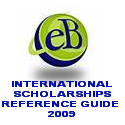Supervision of the research will be done at LabMath-Indonesia by the senior staffs in this project:
Prof. Dr. Sri Widiyantoro (SW, ITB),
Dr. Hamzah Latief (HL, ITB),
Dr. Andonowati (ITB & LMI),
Prof. Dr. Brenny van Groesen (BvG, LMI & UTwente), Dr. Ardhasena
Sopaheluwakan (AS, LMI).
Aim of the project is to perform original research that will be published in international journals and that is directly relevant to improve tsunami simulations. In fact, it is generally accepted that at present, tsunami simulations have errors of a factor of two when compared to field measurements. One of the causes of these errors is the generation phase: the translation of the motion of the ocean bottom to the resulting disturbance of the water: the tsunami generation process. At least five research positions are available to support the research project into various aspects of this problem:
1. Benchmarking of Tsunami Codes We will compare the results and performance of two tsunami codes: the well-validated code of Hamzah Latief (ITB Tsunami Research Group) and the recent Variational Boussinesq Code developed at LabMath-Indonesia. Supervisors: HL , AS & Didit Adytia.
2. Wave generation by bottom excitations Tectonic ocean bottom motions will possibly generate a tsunami. We will use theory and simple simulations to learn about the horizontal influx effects that are usually neglected but may give large energy input. Supervisors: BvG & Didit Adytia.
3. Principles of Inverse Water Wave Modelling We use a new model for fast and reliable uni-directional wave motion to study all aspects of \'inverse\' modelling: given the elevation signal at one place, find the signal at the moment of excitation at another position. Supervisors: BvG & AS
4. Inverse modelling using buoy data for bottom excitation As in the previous topic, but now we use real data from measurements by buoys (deployed by Indonesia) to try to find characteristics of the tsunami generation area and the excitation process. Supervisors: HL , SW, AS & BvG.
5. Bottom excitation from seismic data How much information can we extract from seismic signals about the (time-dynamic) bottom excitation. Literature search, simple models and signal analysis.
Supervisors: SW & BvG.
REQUESTED QUALIFICATIONS
Candidates should be eager to be involved in this research and learn many new topics and ideas. They should have good knowledge of calculus/ analysis including ordinary and partial differential equations, and be experienced in programming, for instance in Matlab. Students or graduates with good grades in S1 or S2 from mathematics, physics, oceanography, geosciences, engineering etc can profit very much from this research experience. A sound scientific attitude (critical, inventive and independent) should be accompanied by a strong motivation and disciplined work attitude.
APPLICATION PROCEDURE
Candidates should send an updated CV, a copy of last degree and academic record, proof of English proficiency and letter of motivation before 15 June 2008 by email to:
Dr. A. Sopaheluwakan: ardhasena_at_ labmath-indonesia.or.id
with cc to
Prof. van Groesen: groesen_at_labmath- indonesia. or.id.
RESEARCH POSITIONS: OFFER
The researches are executed at LabMath-Indonesia, Jl. Anatomi 19, Bandung. Including a one-month probation period, the positions are at least for a period of 3 months (full-time) up to one year (possibly part-time).
If desired, we will support your personal development, including improvement of English when needed, and support to find continued study abroad (MSc or PhD). During the execution you will get valuable experience in mathematical modelling and simulation in this exciting area in geosciences, and will work in a stimulating environment. The salary will depend on qualifications and performance.
This vacancy is also available online at www.labmath- indonesia. or.id
LabMath-Indonesia
international@ labmath-indonesi a.or.id






Post a Comment